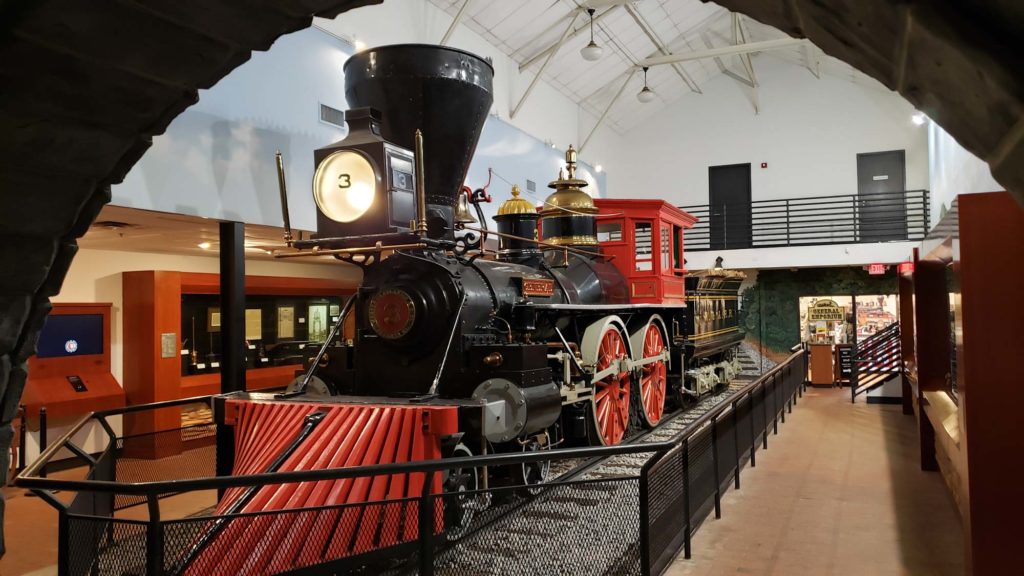Just a short walk from Marietta’s historic square and hidden in plain site inside Fire Station No. 1, the Marietta Fire Museum holds a treasure trove of artifacts certain to please both the history lover and “wanna-be” or “shoulda-been” firefighters.
If you’re familiar with the children’s story “The Little Engine That Could” and its positive-thinking locomotive, you might apply that same thinking to this fire museum and the various fire engines contained within. Just think you can, and you will enjoy a short visit to this small museum which packs lots of Marietta’s history into a relatively small space.
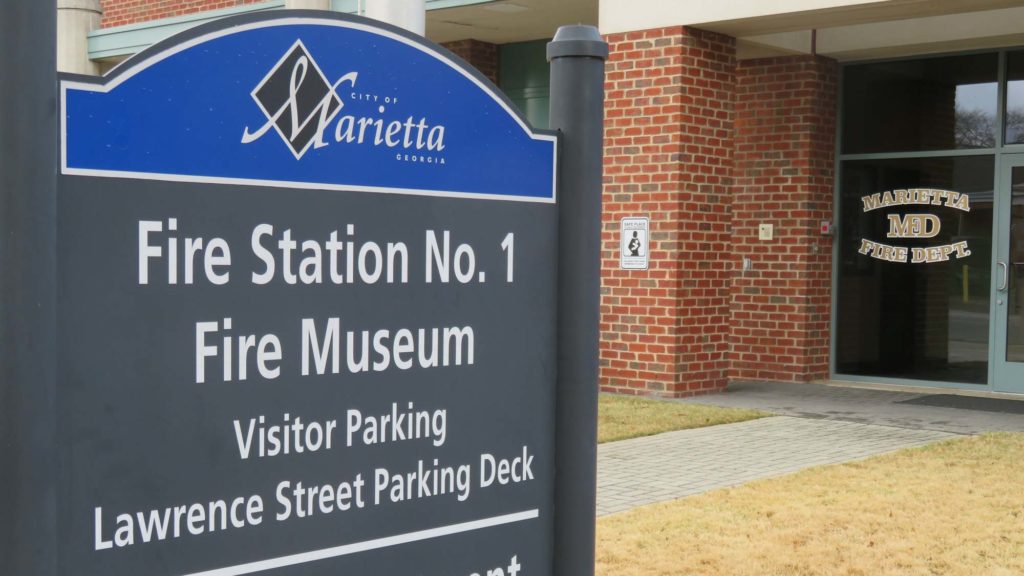
Before you consider a visit, know that the Marietta Fire Museum is open only on weekdays, from 8 am to 5 pm. Admission is free, though you’ll likely pay a small fee to park across the street at the Marietta East Square parking deck. Weekend visits require an appointment, but we can’t honestly tell you how to arrange for one. Brochures are available online and onsite, but plan on reading the placards to get the most out of your visit.
Our visit was a grandfather and grandson outing during a school break. As usual, I didn’t disclose in advance our destination in advance. That was a good thing given the short attention span of a 9-year-old who doesn’t like to read. As you can imagine, that wide-eyed excitement for fire equipment that fills youngsters took over. Before long, he was tugging at me, eager to move on to the next display.
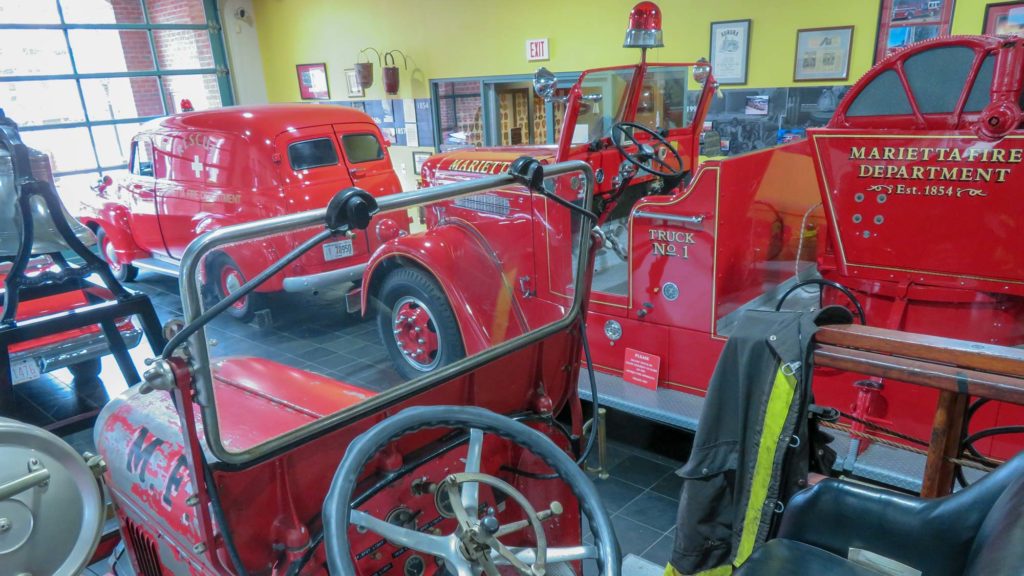
Bright Red with Shining Chrome
We both were drawn immediately to the bright red antique cars, rescue vehicle and fire trucks that fill the first level. A total of four historic vehicles are displayed here. But I might swear the number was triple given the number of excited yells resonating through the exhibit.
For the record, grandson Cooper’s favorite here was the 1949 Pirish Ladder Truck. Designated Ladder #1, its inaugural service was 1949 and retirement in 1984. I was drawn to the historic Chief’s Car, a 1960s vintage Ford Falcon hardtop. It featured enough reflective chrome to light a city block when parked near a blazing inferno.
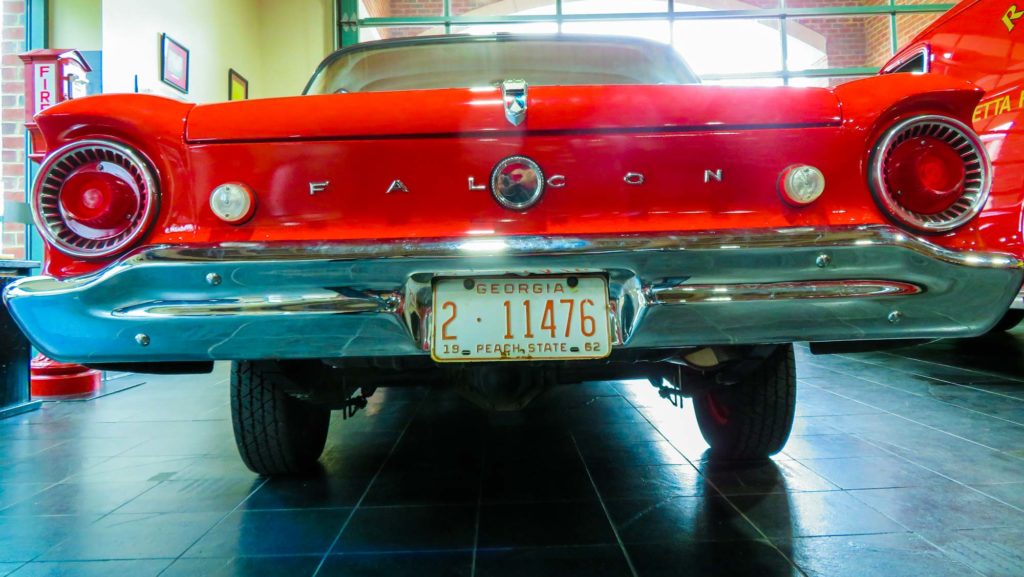
I attempted to read the historic placards, newspapers and information postings for the fire apparatus and various other artifacts. But there was no containing the grandson’s enthusiasm once he spotted another floor below. Especially since that floor exhibited the brightest and shiniest fire apparatus of all — the nickel-plated 1879 Silsby Steamer.
Marietta’s Horse-Drawn Silsby Steamer
Purchased by the City of Marietta in 1879, this horse-drawn firefighting miracle remained in active use until 1921. Today, it’s believed to be only one of five still in existence.
Firefighting historians generally acknowledge that the Silsby Steamer was the innovation that created modern fire departments. Prior to its development, fire departments depended on bucket brigades and hand pumps to fight blazes. Neither method was particularly effective in dousing any burning infernos. They were most effective in stopping the spread of an active fire to neighboring structures.
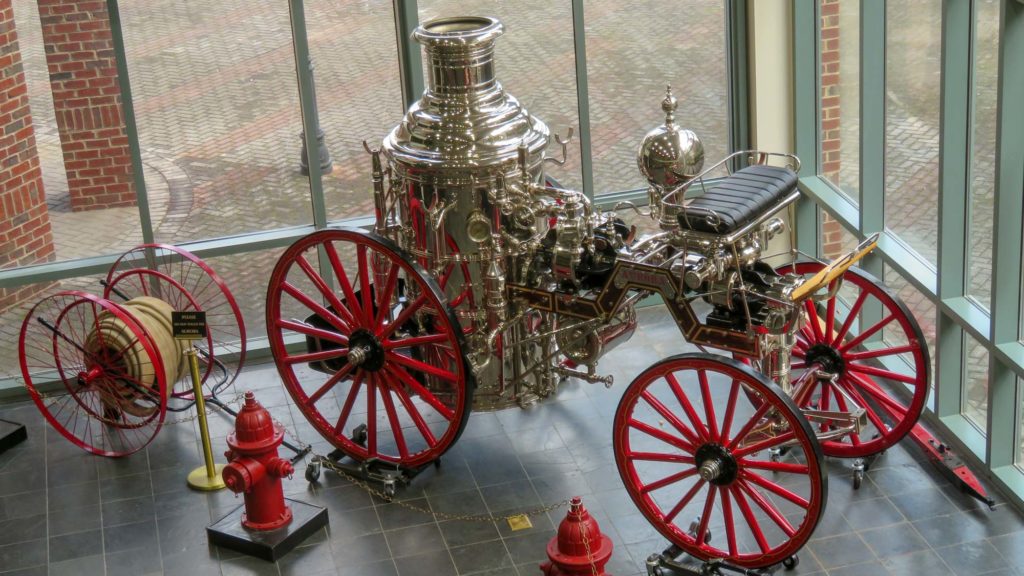
The Silsby’s breakthrough was a steam powered pump. Capable of pumping 600 gallons of water a minute, it could shoot a stream reaching over 200 feet. That made those hand-pumps look like squirt guns. With the new pumpers in high demand, the City of Marietta purchased the 65th unit built by the Seneca, New York-based Silsby Company.
The irony of the Silsby Steamer was that an active fire was required to fight fires. To generate the steam pressure necessary for the pump, one of the fire crew shoveled coal into a fire box on the unit. There, it burned to heat the water until the steam pressure was sufficient to project water onto an active fire.
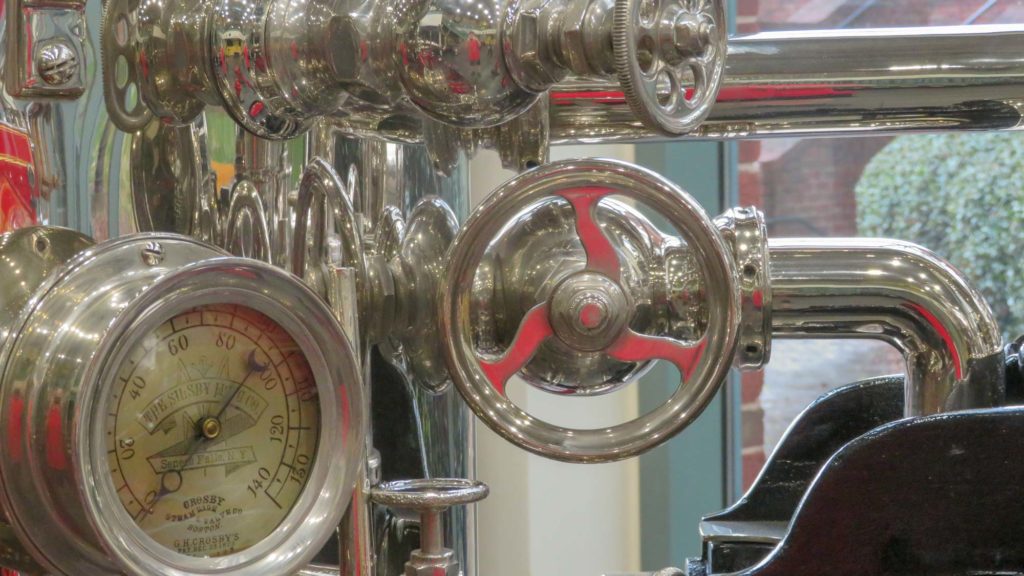
How Dalmatians Became Fire Dogs
I was able to impart some of that background to Cooper. But he quickly bored with the grandfatherly blabbering, ready to move on to the next bright, shiny object. I did manage to hold his interest for one more minute by talking about how Dalmatians were critical parts of the Silsby’s fire-fighting team.
Now admit, you want to know the story, too. But only because you asked!
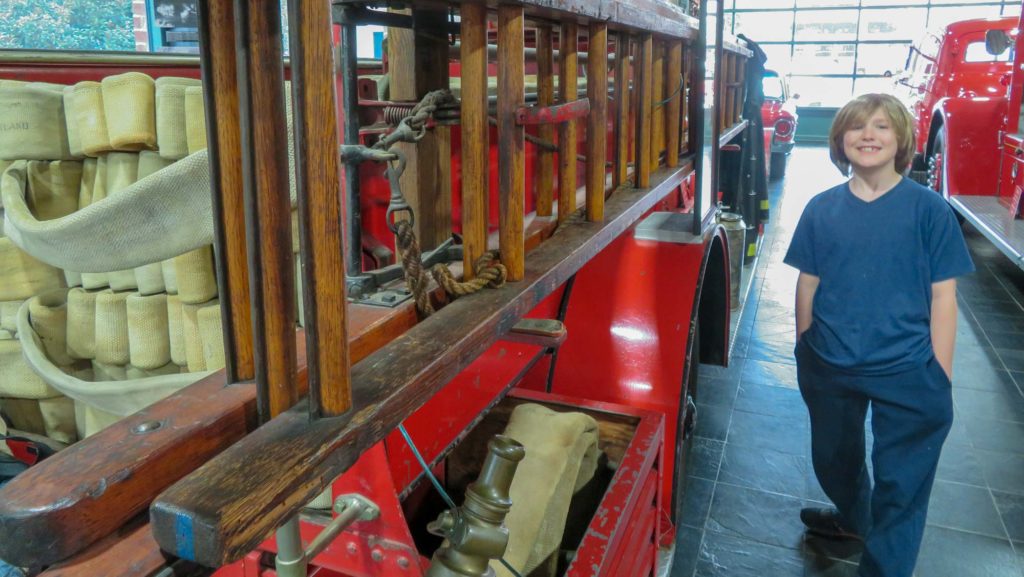
Imagine a frantic fire crew, racing down a narrow city street — likely a dirt or cobblestone road — to an 1880s fire. A team of three horses pulled the Silsby unit. An active fire burned in the firebox and steam poured from the stack. The wagon clattered noisily down the street, rattling loudly over every bump. A driver guided the team of racing horses. A crew of two or three firemen hung on for dear life during the ride. And out front or alongside ran a Dalmatian.
Dalmatians served since the 1700s as fire carriage dogs, accompanying carriages and guarding their contents. Whether factual or fanciful, Dalmatians reputedly possessed a special affinity for horses, and their presence helped to guide and calm horses. And according to the American Kennel Club, “In 1910, the Westminster Dog Show developed a category for Fire Department Dalmatians. The inaugural winner was a Dal named Mike from New York’s Engine Company 8 on 51st Street. The tradition lasted for the next 30 years until being discontinued.”
Just the Artifacts, Please
As mentioned, the museum is filled with other artifacts. Those include vintage fire fighting protective gear; a variety of nozzles, gauges, hoses, helmets and more; newspaper articles recounting famous Marietta fires; and photos from ceremonies and parades featuring the Marietta Fire Department. But with a 9-year-old along, we quickly bypassed most of those with time only for a photo or two.

One “don’t miss” artifact on the lower level is a steel I-beam cut from the rubble of the World Trade Center. It was given to the Marietta Fire Department by the Fire Department of New York (FDNY), and commemorates the firefighters and other first responders who lost their lives in rescue efforts at the Twin Towers.
After-Visit Treats
Naturally, this kind of outing requires a sweet ending. Fortunately, with Marietta Square a few blocks away, it’s relatively easy to source some sugary substance to soothe intrepid history explorers. With a movie filming on the Square, our first choice of Sarah Jean’s wasn’t available. But that necessitated a choice among the remaining options of Sweet Treats Marietta, Rocket Fizz candy store, Snow on the Square and the other outlets at the Marietta Square Marketplace. Ruling out “all of the above” as a choice, we successfully navigated our path to a satisfactory sugar purveyor for our homeward-bound treat.

More Nearby Family-Friendly Options
Depending on your party size and ages, the Marietta Fire Museum will require 30 minutes to two hours for a visit. If you want to combine this with other nearby activities, here are a few of our favorites, listed in order of proximity:
Marietta Square Market. Local food hall featuring a wide variety of meals and treats.
Marietta Bike and Walking Path. Easy walk to Marietta’s city and Confederate cemeteries.
Great Locomotive Chase. The Marietta History Museum includes exhibits on the Chase and other local events.
Gone With the Wind Museum. Movie artifacts from this Southern classic, often confused with real history.
Kennesaw Mountain Hikes. If you’re looking for more strenuous physical activity, or a weekday drive to a scenic viewpoint.
Smith Gilbert Botanical Gardens. A local hidden gem featuring native plants, extensive sculptures and a seasonal butterfly exhibit.
KSU Holocaust and World War II Museum. A free museum, though a bit intense for the younger crowd.
